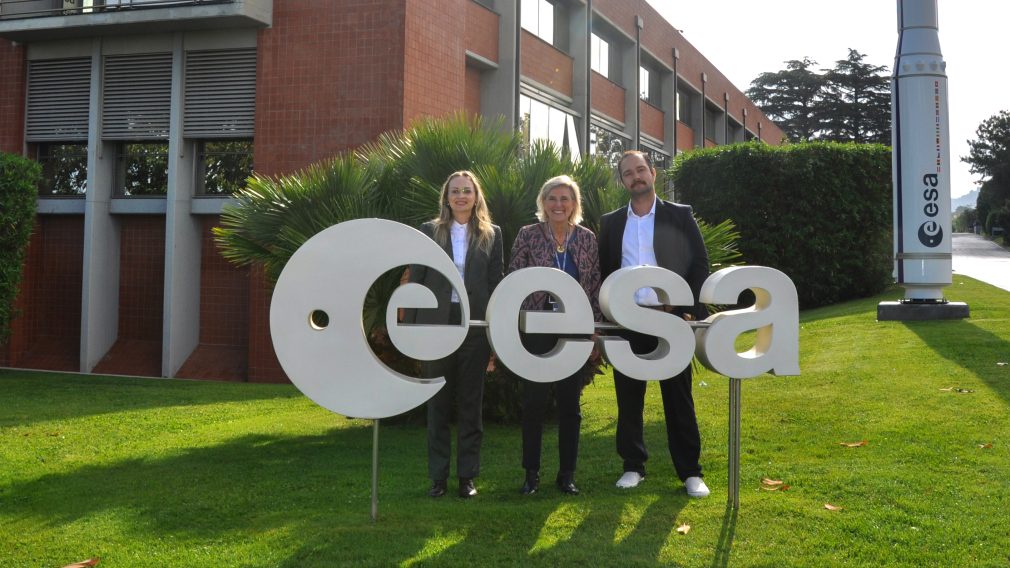The European Space Agency (ESA) and Brazil have maintained a collaborative relationship in space exploration and technology over the years. In 2002, ESA and Brazil signed a Framework Cooperation Agreement to expand joint efforts in space science, Earth Observation, telecommunications, microgravity experiments, and life sciences, facilitating the exchange of experts and collaborative studies, and strengthening the scientific and technical ties between the two entities.
Since then, other joint initiatives followed. In 2011, Brazil’s National Institute for Space Research (INPE) became a member of the International Charter ‘Space and Major Disasters’, an ESA co-founded global initiative that provides rapid satellite data access to support disaster management efforts. In 2018, ESA and the Brazilian Space Agency (AEB) signed an Implementing Arrangement to establish and use telemetry and tracking facilities in Natal, Brazil.
In March 2024, Simonetta Cheli, Director of Earth Observation Programmes at ESA, and Clezio Marcos De Nardin, Director of the National Institute for Space Research, signed a Protocol of Intent to strengthen the relationship between ESA and INPE/AEB.
The Protocol of Intent seeks to promote cooperation in the areas of Earth Observation Science, Missions Development and Validation, and Policies. Initiatives under this protocol aim to study carbon budgets associated with different land cover types, with a focus on the Amazon forest; to validate data for missions such as EarthCARE, BIOMASS, Copernicus Sentinel-5P and FLEX; and to collaborate on different climate policies.
The conservation and protection of the Amazon ecosystem is a common objective of both signatories. As one of Brazil’s national treasures, the Amazon Rainforest is home to a unique biodiversity and a crucial guardian of the planet’s climate. Beyond its rich diversity, it plays a crucial role in regulating global climate patterns and storing carbon.
As part of the research outcomes stemming from the Protocol of Intent signed between ESA and INPE, Gabriel da Rocha Bragion, ESA International Research Fellow, will spend 12 months at ESA Φ-lab developing methods for estimating carbon stocks from biomass, using SAR data and machine learning techniques. Gabriel will also work on calibrating and validating data for the upcoming BIOMASS mission – an ESA initiative focused on measuring forest biomass to assess terrestrial carbon stocks and fluxes and better understand the planet’s carbon cycle.
Gabriel da Rocha Bragion is an Environmental Engineer from the Federal University for Technology (UTFPR), one of the most renowned universities in Brazil. Gabriel obtained his MSc and PhD degrees from INPE’s Remote Sensing post-graduation programme, which has obtained the highest level of international excellence (level 7) from CAPES, the Brazilian federal government agency under the Ministry of Education, responsible for quality assurance in undergraduate and postgraduate institutions in Brazil. Gabriel also participated in two exchange programmes: one in Geoenvironmental Sciences at the University of Trier (Germany) and the other at NASA/USRA during his PhD.
Together with the Laboratory for investigation of Socioenvironmental Systems at INPE (LiSS), Gabriel’s PhD research was focused on night-time satellite image analysis. By identifying and calibrating time-series of night-time images, his goal was to identify and classify different types of settlements based on patterns that night-time lights present over time.
These patterns helped to assess the general conditions and access to basic services (e.g., urban health, healthcare services) all over the Brazilian Legal Amazon. During his time at NASA/USRA, Gabriel also contributed to the training and validation stage of AI-based models for identifying outliers in night lights, generally caused by outages and natural disasters.
“The Amazon Forest is a complex and dynamic system that plays a major role in absorbing and stocking carbon dioxide from the atmosphere. Artificial intelligence could be key to improving the estimation of carbon stocks, ultimately leading to more efficient environmental preservation and recovery policies”, comments Gabriel. “By combining cutting-edge AI technology for Earth Observation with a vibrant, culturally rich atmosphere, ESRIN’s Φ-lab is the ideal environment to spark and develop new ideas.”
Through relentless effort, and as a Brazilian researcher herself, Rochelle Schneider played a key role in the creation of an international fellowship aimed at Brazilian researchers: “I was delighted to support Simonetta in enabling this ESA research fellowship for a Brazilian researcher. This achievement reflects the research excellence from Brazilian institutions in remote sensing, which led ESA to establish this unique opportunity. Moreover, this joint opportunity is a significant outcome of the Protocol of Intent, fostering collaboration between both space agencies to address a critical global climate challenge.”
Featured image : Rochelle Schneider, Copernicus Ecosystem Operations Engineer at ESA and Φ-lab ambassador (left), Simonetta Cheli, Director of Earth Observation Programmes at ESA and Head of ESRIN (middle), and Gabriel da Rocha Bragion, ESA International Research Fellow at Φ-lab (right).

